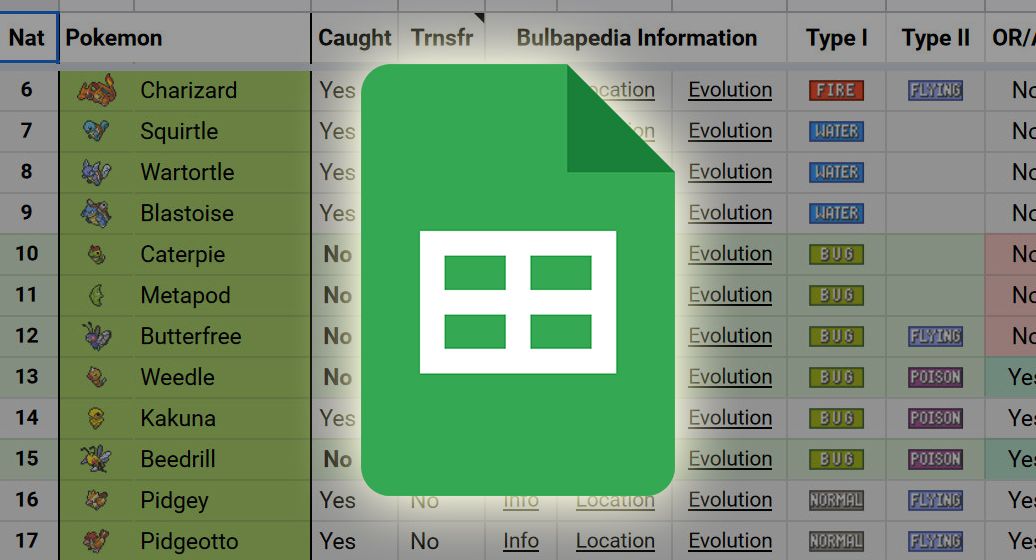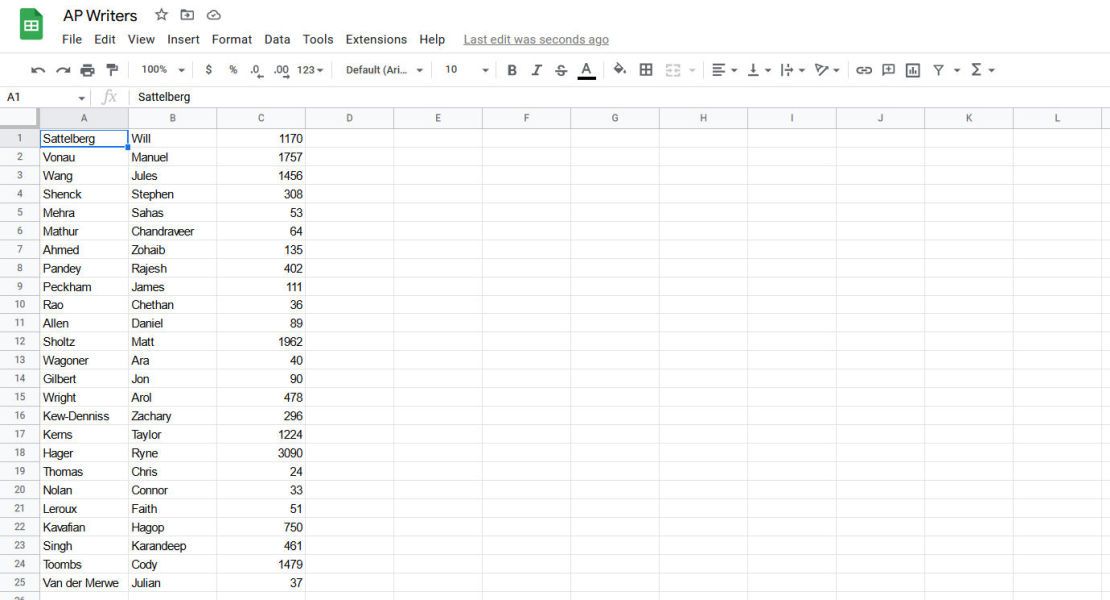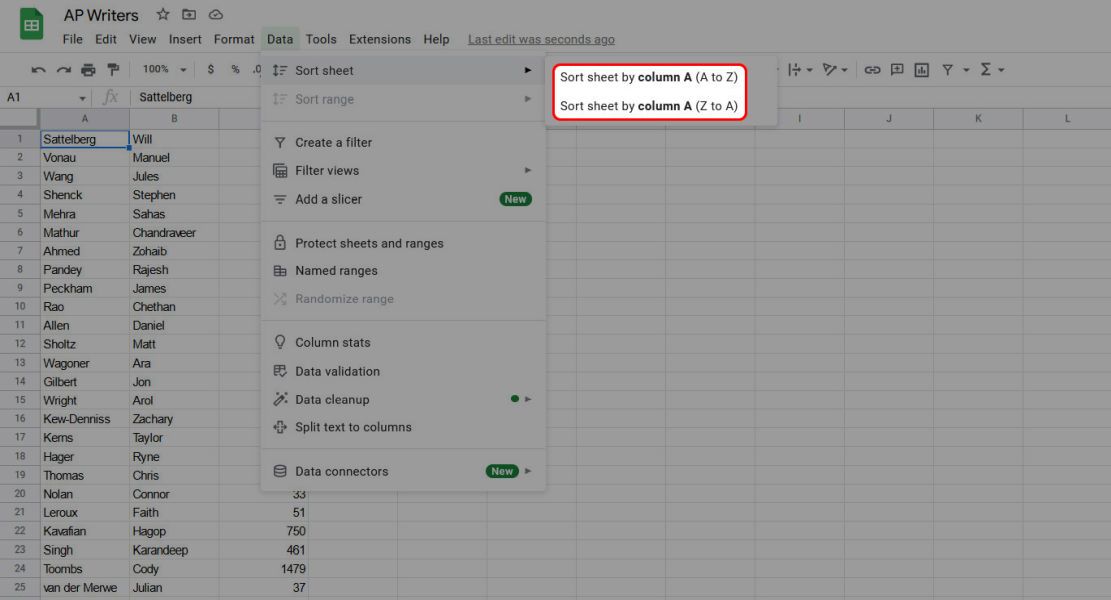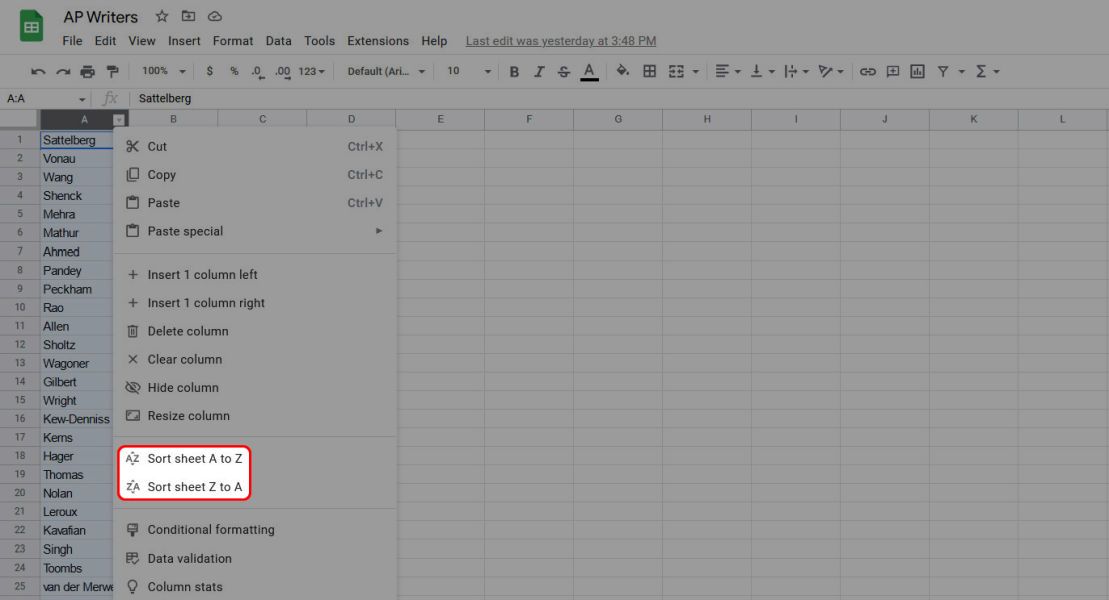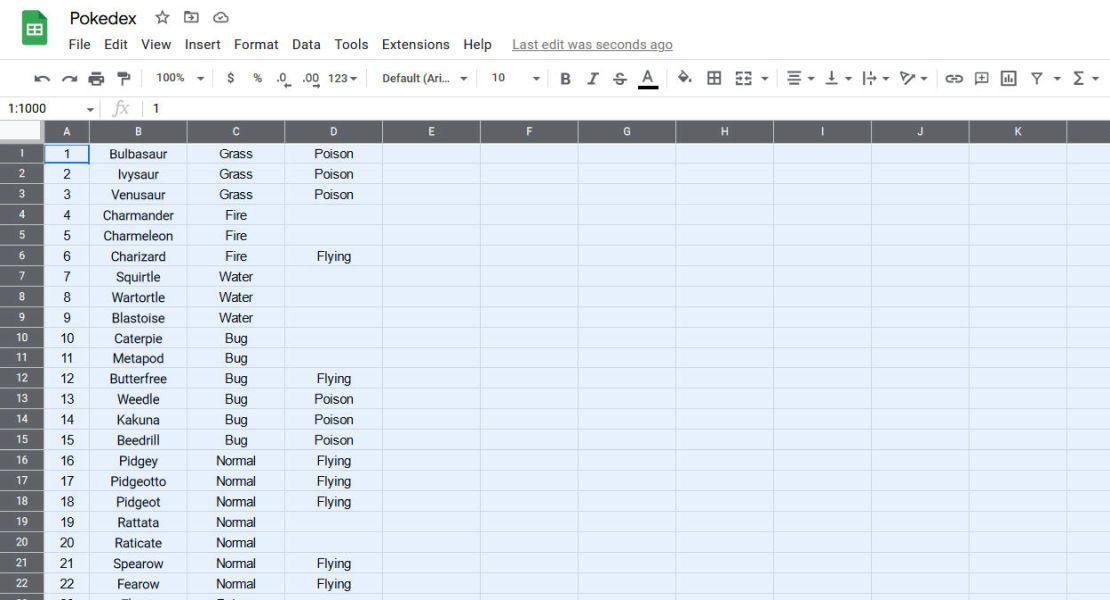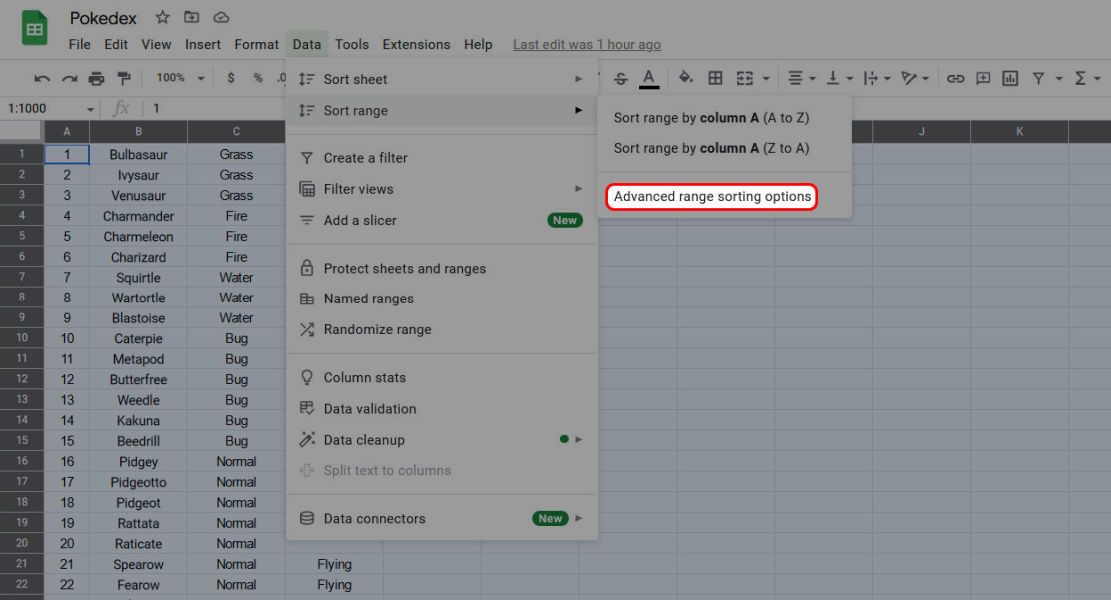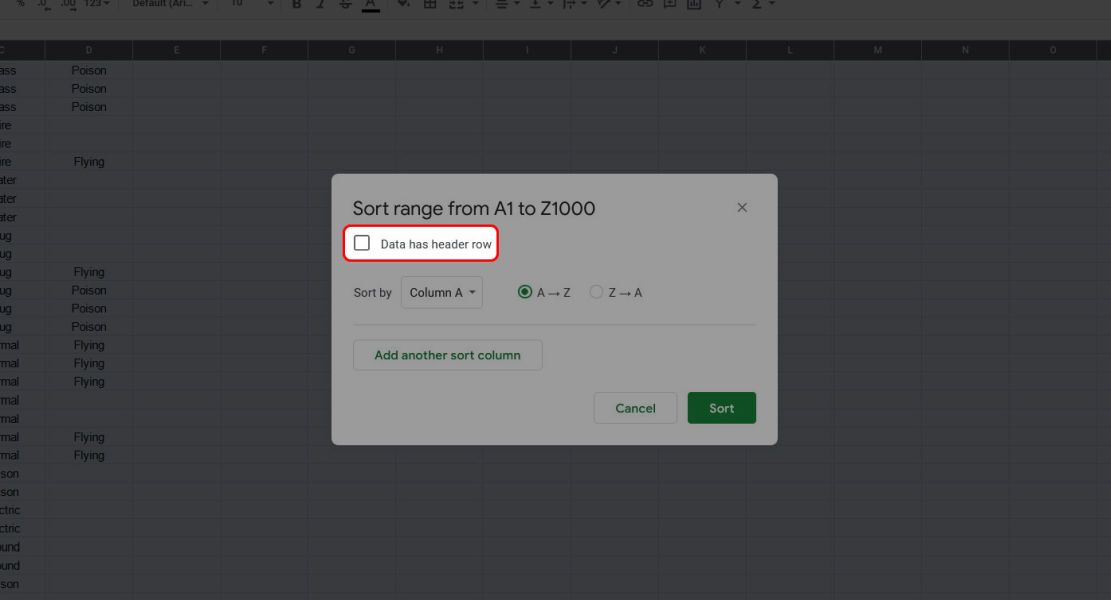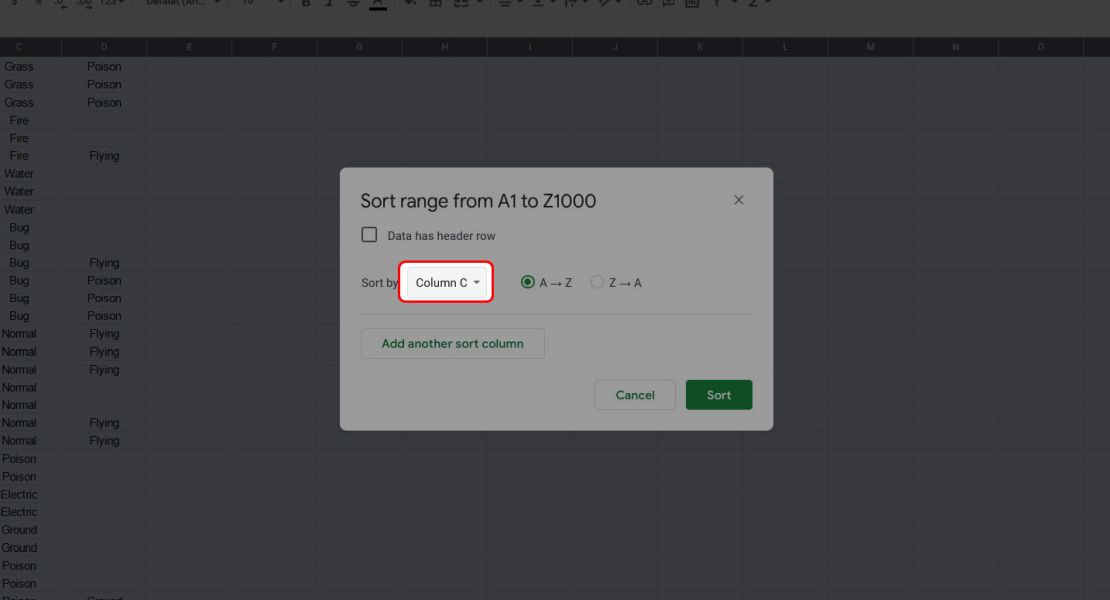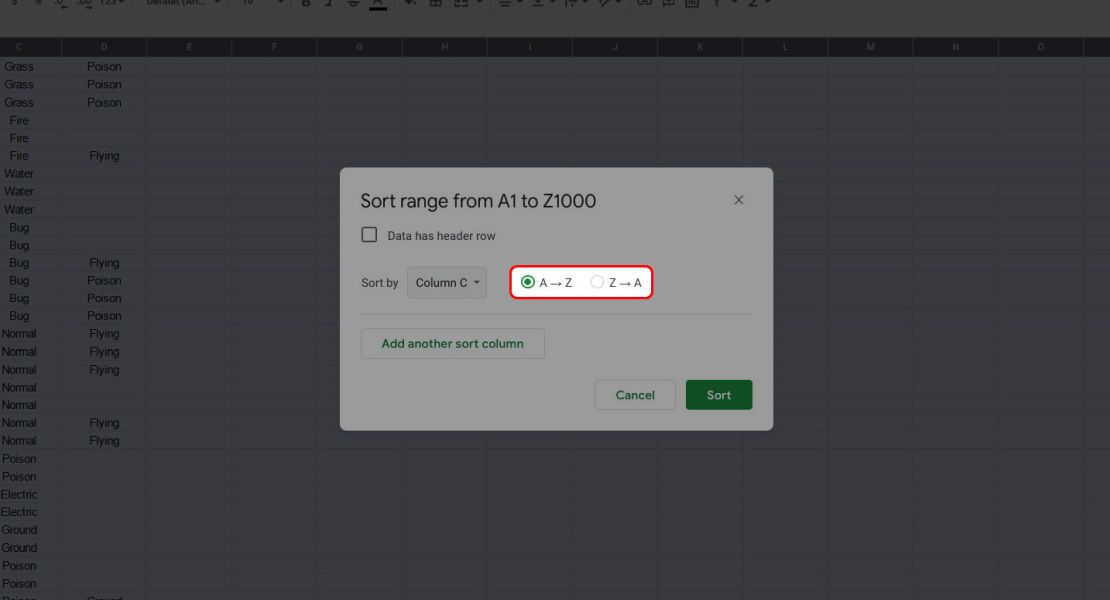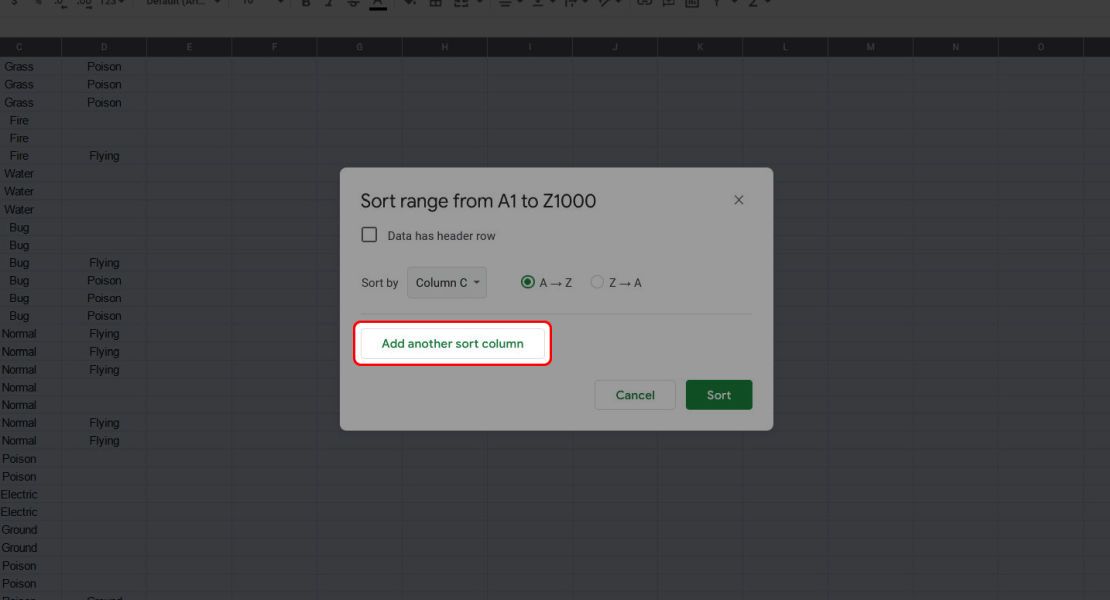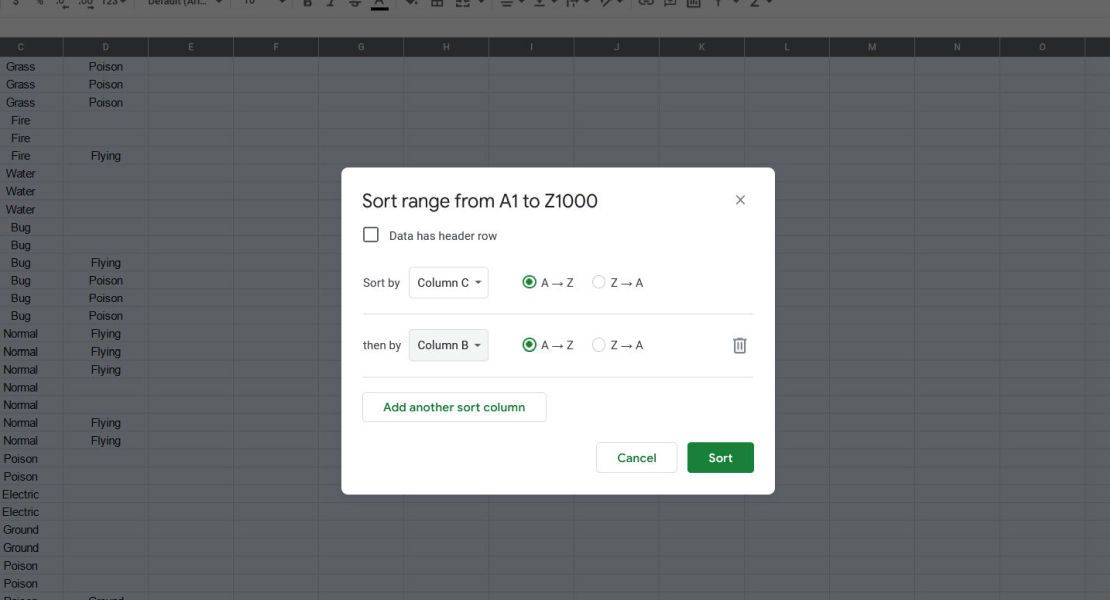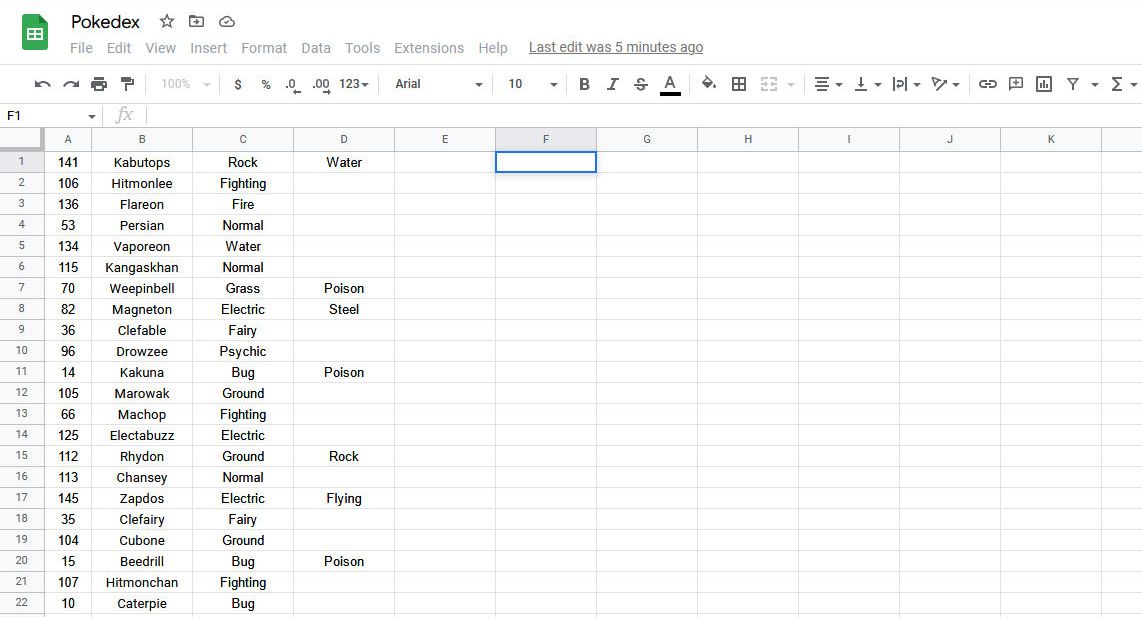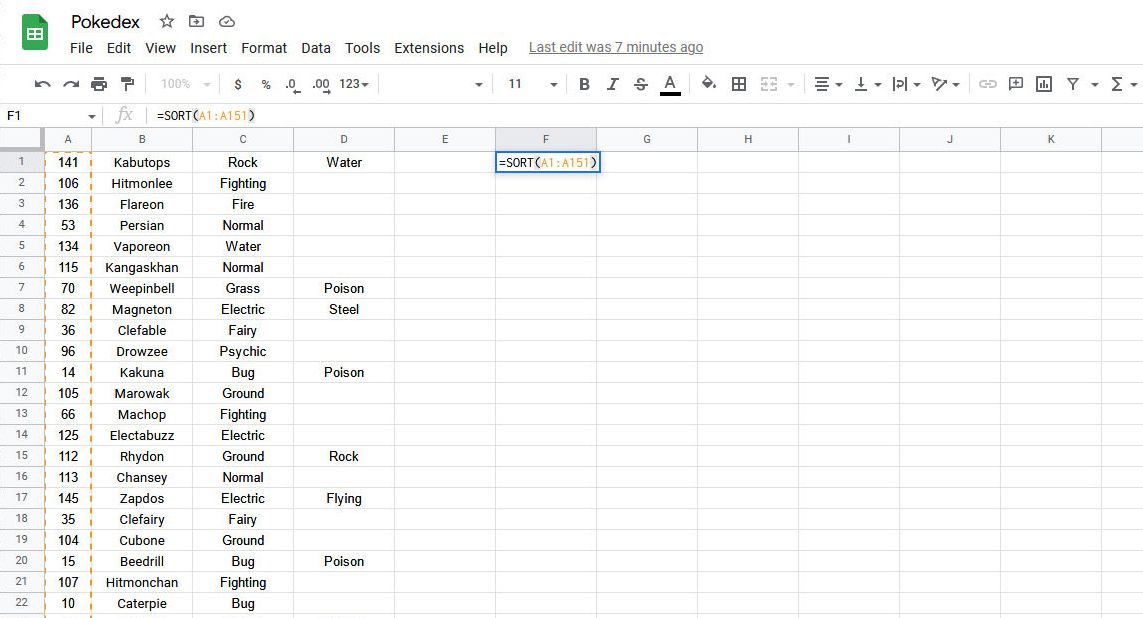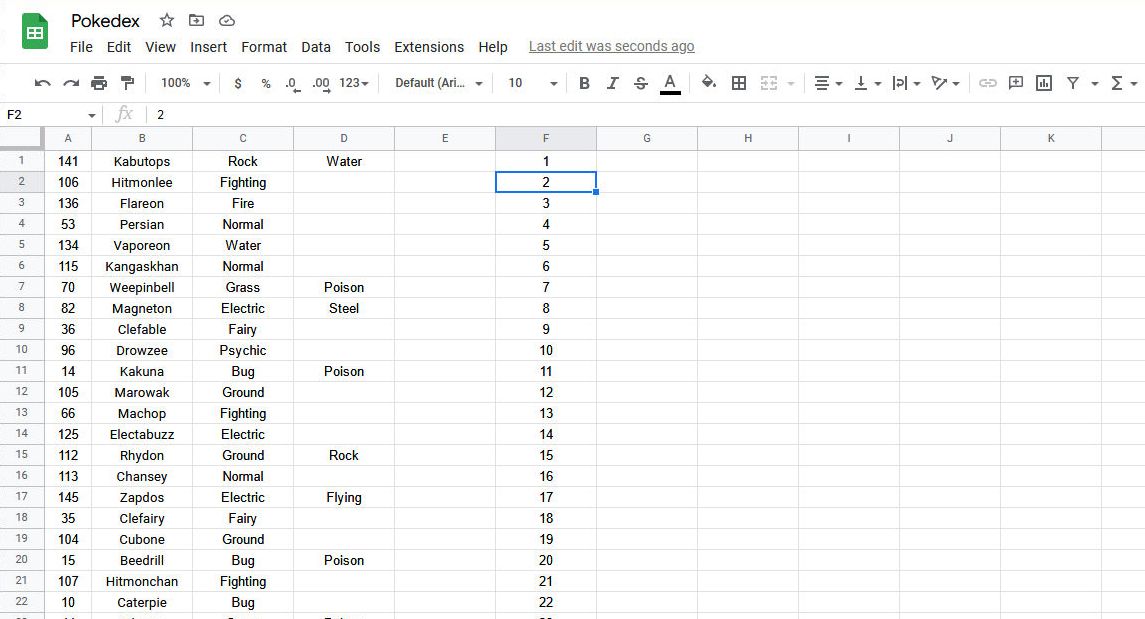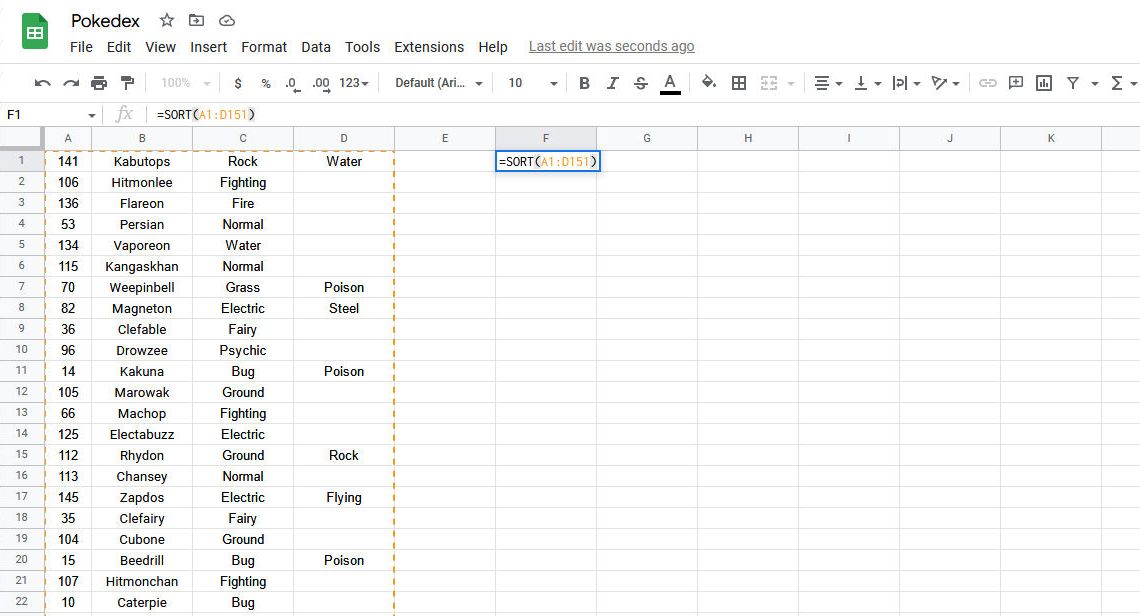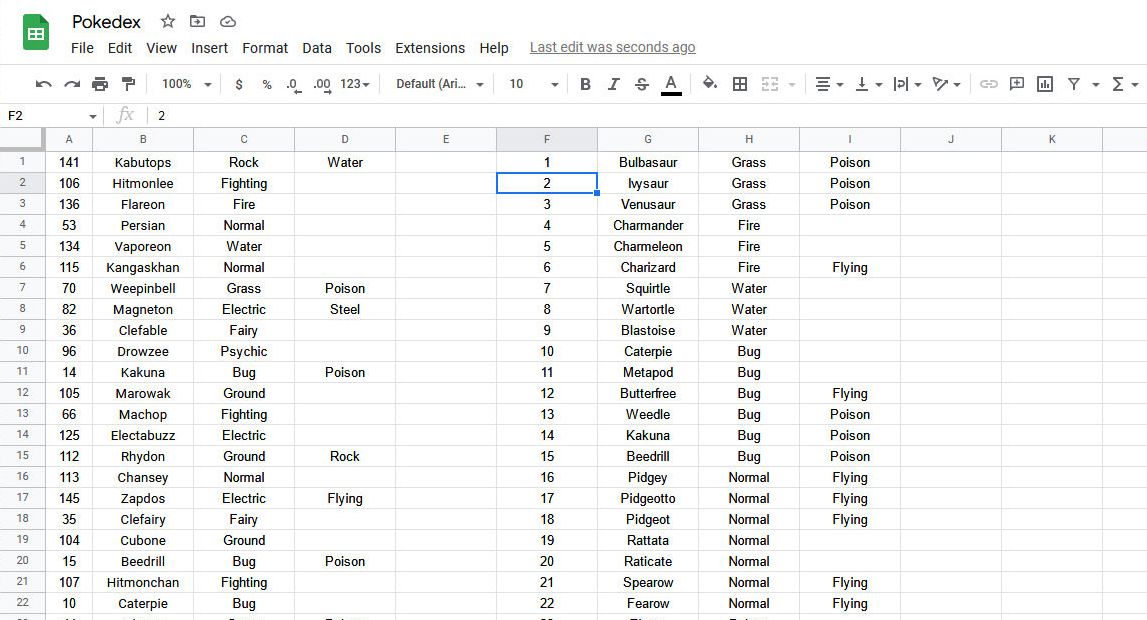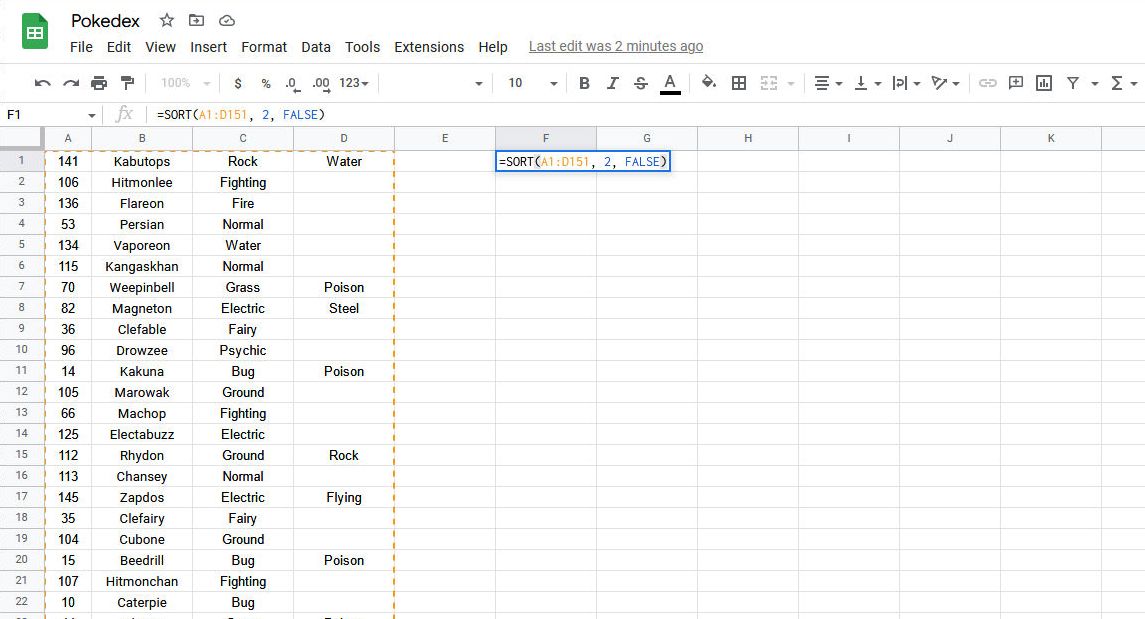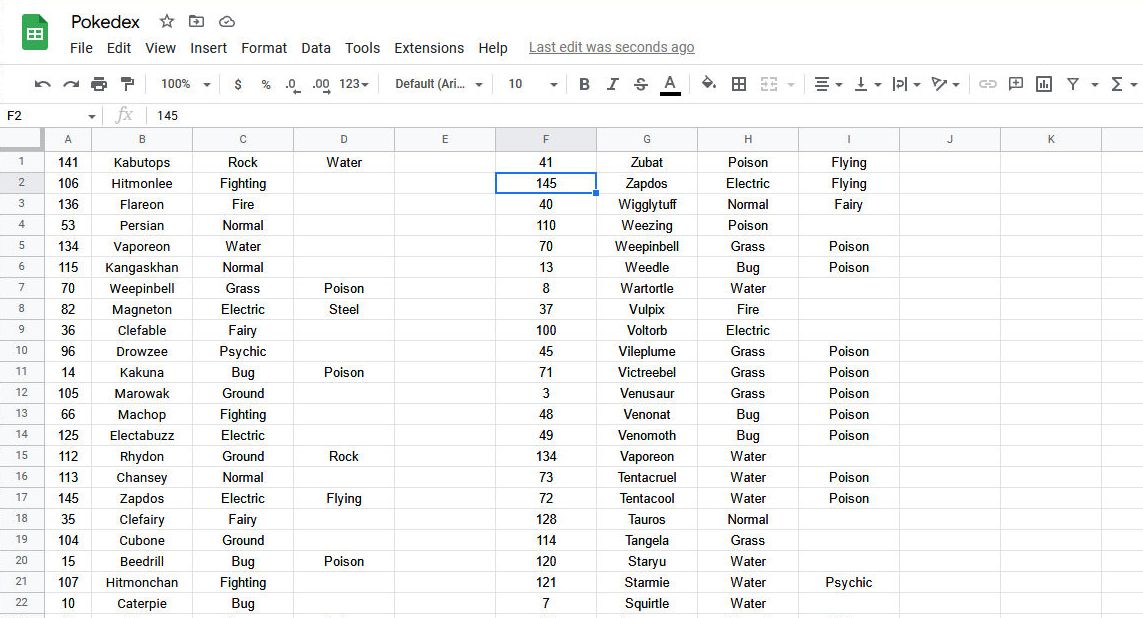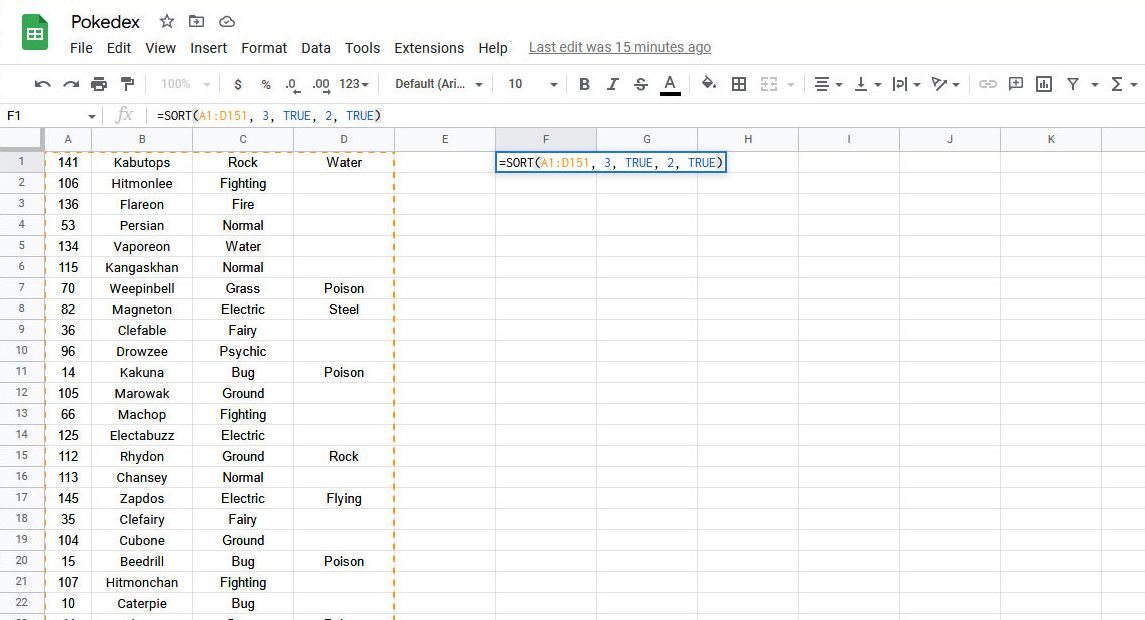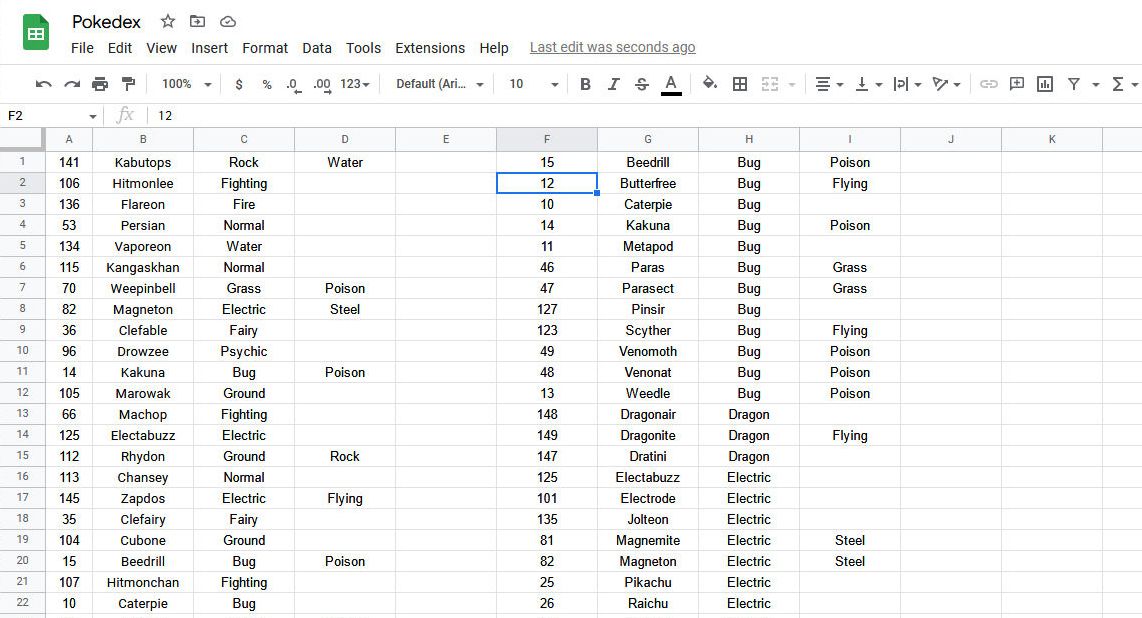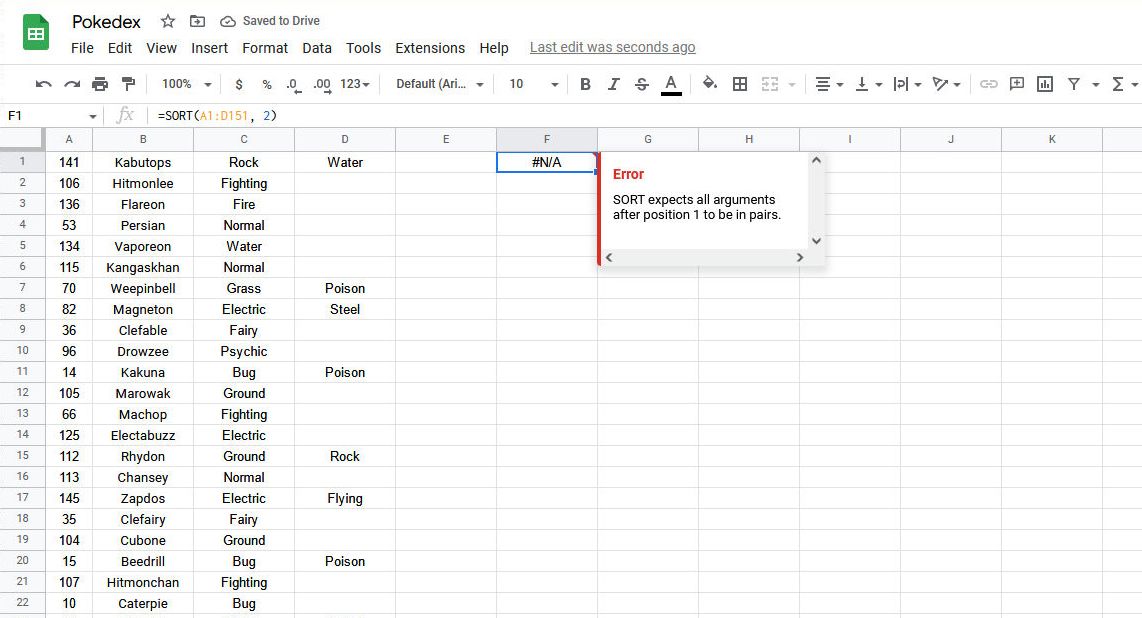Whether calculating your monthly household budget or cataloging your Pokémon collection, spreadsheets are invaluable for organizing and manipulating data. For decades, spreadsheets were the domain of businesspeople and accountants via often-expensive software packages. As people who own Chromebooks are well aware, Google Sheets can stand in for those software packages for all but the most intensive tasks.
Spreadsheets are awesome. You've probably used one at least once in your work. But in case you're out of practice, the thing that sets a spreadsheet apart in a productivity suite of software is its ability to organize and manipulate data. We would have to write a book to cover all the ways you can manipulate data in Google Sheets. So instead, we'll talk about ways to organize it quickly.
Sorting data with Google Sheets
When organizing data in Google Sheets, you need to know which data you want to sort. When sorting Pokémon, maybe you want to sort by the Pokémon number. If you're sorting your CD collection, you might want to sort by the year it was released. If you're organizing a list of Android Police writers, you could sort by their last names. A simple sort like this can be done in a few clicks.
Sort spreadsheet data on a desktop
-
Select any cell in the row with the data you want to sort by.
- Click Data from the menu at the top of the window.
- Hover over Sort sheet from the drop-down menu.
-
Select either Sort sheet by column A (A to Z) or Sort sheet by column A (Z to A), depending on your needs.
An alternate method of sorting data in Google Sheets
- Select the column with the data you want to sort by.
- Hover over the selected column head and click the triangle menu button.
-
From the drop-down menu, select either Sort sheet A to Z or Sort sheet Z to A.
This method will sort all the data in your sheet, not just a limited set of data.
Sort Google Sheets data using the mobile app
- Select the column with the data you want to sort by tapping the column header.
-
Tap the column header again to bring up a menu.
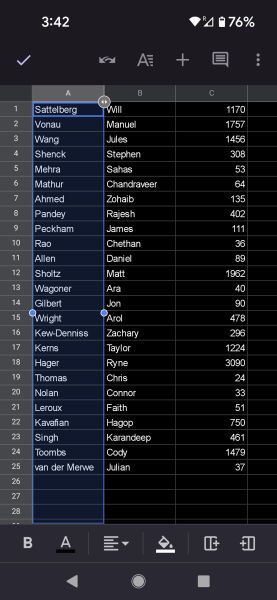
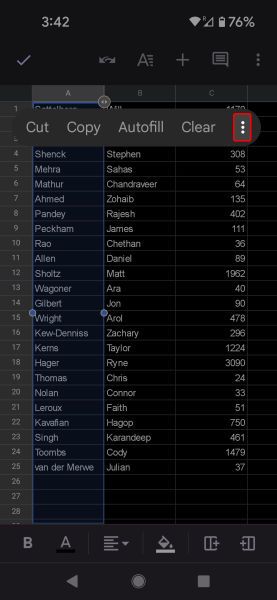
- Touch the three-dot overflow menu. On iOS, you will see an arrow instead of a three-dot menu.
-
Select either Sort A-Z or Sort Z-A.
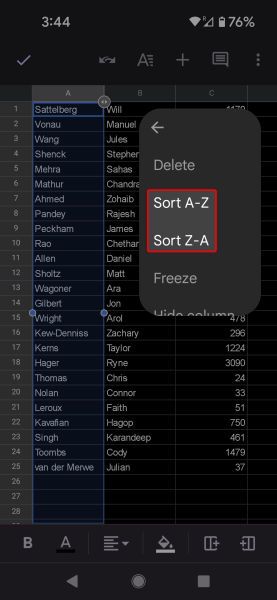
These sort options also work for numerical values. A to Z is analogous to sorting numbers from lowest to highest. Likewise, sorting from Z to A with numerical values arranges them from highest to lowest.
Advanced sorting with Google Sheets
Sometimes your sorting needs are simple (alphabetizing a class roster or sorting expenses by cost), and sometimes you need to do something more complex. Perhaps you're running a competition and want to sort by category first and then sort by time within each category. Or maybe you want to sort a Pokédex by type and then sort each type alphabetically. Google Sheets can do it, and it won't even judge you.
-
Select the data you want to sort, not just the column with the data you want to sort by. Often, you can select the whole sheet.
- Click Data from the menu at the top of the window.
- Hover over Sort range from the drop-down menu.
-
Select Advanced range sorting options.
This opens a new window that allows you to fine-tune your sort. In this case, we want to sort our Pokémon by their primary type and then sort each type alphabetically based on the Pokémon's name. Here's how to get that done:
-
If you have a header row (in this case, we don't), check this box, and Sheets ignores the top row of the spreadsheet when sorting.
-
Select which column you'd like to sort the data by. Pokémon type is in column C, so we'll select that one.
-
Select either A→Z or Z→A.
-
To sort within each type after the data is organized by type, click Add another sort column.
- Repeat steps 2 and 3, but select the column corresponding to the name of the Pokémon, which is column B in this example.
-
Click Sort.
Using a function to sort data
The sorts we've done so far have changed the original data. We haven't deleted anything, but often it's best to leave the original data alone. To create a sorted list of data without changing the original input, we'll have to delve into the murky world of spreadsheet functions. In this case, we'll use the SORT function.
At its simplest, the SORT function requires a range of data to sort, taking the form =SORT(first_cell:last_cell). Let's start with our randomized list of Pokémon.
-
Highlight the cell where you want the sorted data to begin appearing.
-
In either the cell or the formula bar, type =SORT(A1:A151).
-
Press Enter.
You should be able to see the problem right away. Because we only selected the Pokémon numbers in our sort range, that was all that was output. To fix this issue, expand the range to include all four columns by entering =SORT(A1:D151).
By default, the SORT function organizes data in ascending order (lowest to highest or A to Z) based on the first column in the range.
To change that default behavior, we'll add two or more arguments to our SORT function. We need one argument to indicate which column has the data by which we want to sort and a second to indicate whether to sort the data in ascending or descending order.
Our new function takes the form =SORT(first_cell:last_cell, sort_column, is_ascending). Let's alphabetize our list of Pokémon from Z to A instead of organizing it based on a number to get a better idea of what this looks like.
- Highlight the cell where you'd like the sorted data to begin appearing.
-
Type =SORT(A1:D151, 2, FALSE).
-
Press Enter. The 2 tells the function to sort the range of data based on the data in the second column of the selected data. The FALSE indicates we do not want to sort it in ascending order. In this case, it will be sorted in reverse alphabetical order.
We can also sort within our sort. Let's say we want to organize our Pokémon by their type, but we want the Pokémon of each type to be organized alphabetically. Here's what that looks like.
- Highlight the cell where you'd like the sorted data to begin appearing.
-
Type =SORT(A1:D151, 3, TRUE, 2, TRUE).
-
Press Enter. The 3, TRUE argument tells the function to sort by the data in column 3 in ascending order. The 2, TRUE argument indicates that items with the same value in column 3 should be sorted by the data in column 2 in ascending order.
If you add more than one argument to a SORT function, the arguments must be in pairs. For example, typing =SORT(A1:D151, 2) results in an error. If you indicate a column by which to sort, you must also indicate how you want it to be sorted.
Make your data work for you
So what is all this good for? That depends on your use case. If you're organizing a race, you might want an alphabetical list of participants or a list of the finishers from first to last. If you're running a business, you might want to organize your data to see which employee had the highest sales on a given day.
The use cases for spreadsheets are endless, but one of the first things you must learn before getting any value out of them is how to organize information. If sorting is trivial for you, improve your skills with these eight tips and tricks for Google Sheets.

